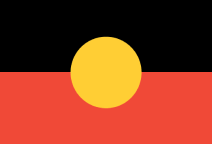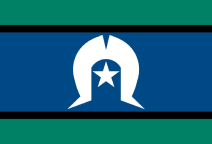On this page:
Traditional Owners have managed land and water sustainably for thousands of generations. Caring for Country, including its waterways, is a custodial obligation of Traditional Owners. Keeping Country healthy can deliver thriving cultural economies and benefits for all Victorians.
Water is Life
Under Water is Life: Traditional Owner Access to Water Roadmap (Water is Life), the Victorian Government is committed to working with Traditional Owners to increase their access to water and their involvement in water management. Water is Life provides an important framework to support Traditional Owner self-determination in water access and management.
In 2021-22, the VWA reported on the volume of water entitlements held by Traditional Owners and other Aboriginal organisations for the first time. The 2023-24 Accounts provide updated information as at 30 June 2024. This annual reporting will help us monitor our progress against Targeted Outcome 7 in Water is Life Traditional Owner Access to Water Roadmap: Water is returned to Traditional Owner groups across Victoria through the issue of water entitlements for their self-determined use.
Future Accounts will continue to build on this reporting in partnership with Traditional Owners.
Water entitlements held by Traditional Owners
Traditional Owners and other Aboriginal organisations hold surface water and groundwater entitlements.
The Victorian Water Accounts reports on the volume of water held by Registered Aboriginal Parties as well as other known Aboriginal organisations and cooperatives. There may be other Aboriginal organisations holding water entitlements that are not included in this assessment. The total entitlement volume held by these organisations as at 30 June 2024 was estimated to be 9,228 ML, an increase of 2,336 ML from the previous year (Table 1).
Table 1: Water held by Traditional Owners and other Aboriginal organisations in Victoria
An example of how water has been returned to Traditional Owner Groups in 2023-24 was when a 1,405 ML water licence in the Birrarung (Yarra River) was transferred to the Wurundjeri Woi-wurrung Cultural Heritage Aboriginal Corporation. The former Amcor paper mill water license had been held by the Department of Energy, Environment and Climate Action and managed by Melbourne Water. This water licence is now held by the Wurundjeri Woi-wurrung Cultural Heritage Aboriginal Corporation for cultural use.
Another recent example is that in March 2022 the Gunditj Mirring Traditional Owners Aboriginal Corporation was allocated a 2,500 ML water entitlement in the Palawarra (Fitzroy River) within the UNESCO World Heritage Listed Budj Bim Cultural in the Portland Coast basin. Budj Bim was inscribed in 2019 for its cultural values to the Gunditjmara community and contains the world’s most extensive and oldest aquacultural system. Managing the flow of water over Country is an essential aspect of managing for cultural values, including the iconic aquaculture of kooyang (short-finned eel).
Other access to water by Traditional Owners
In addition to holding water entitlements, Traditional Owners also work in partnership with government agencies to manage water for environmental and cultural outcomes. Some 2023-24 examples of other ways that Traditional Owners are involved in managing water include:
- In the Moorabool basin, Barwon Water and Central Highlands Water temporarily transferred water to Wadawurrung Traditional Owners Aboriginal Corporation (Wadawurrung) for a Wadawurrung-led trial delivery of water to the east and west branches of the Moorabool River and to Durdidwarrah Wetland.
- 200 ML from Lal Lal Reservoir was made available for the Moorabool River west branch (Barwon Water and Central Highlands Water each provided 100 ML).
- 50 ML was made available by Barwon Water from the Bostock Reservoir for the Moorabool River east branch.
- 50 ML has been provided by Barwon Water from the Upper Stony Creek reservoir for delivery at Durdidwarrah Wetland.
- In the Ovens basin, the Taungurung Land and Water Council Aboriginal Corporation transferred 39 ML of water allocation to the VEWH for delivery in the Ovens system (King River) for environmental and cultural outcomes.
- In the Mallee basin, the First People of the Millewa-Mallee Aboriginal Corporation worked closely with the Mallee Catchment Management Authority, the Victorian Environmental Water Holder and the Department of Environment, Energy and Climate Action to deliver 100 ML of water for the environment to the Musk Duck Wetland in Ned’s Corner.
In addition to the entitlements and examples mentioned above, under section 8A of the Water Act 1989, any member of a Traditional Owner Group with a natural resource agreement under the Traditional Owner Settlement Act 2010 can access water from a waterway or a bore for traditional purposes. Like other Section 8 rights, these entitlements are not recorded in the Victorian Water Register. For more information on these entitlements, visit How is water managed?
Water information for Traditional Owners
The Victorian Water Register can be a useful source of information for Traditional Owner organisations about the volumes of water that are available and used on Country. For example, in 2022-23, at the request of DJAARA (Dja Dja Wurrung Clans Aboriginal Corporation), DEECA provided support in the development of a map of water infrastructure and extraction on Djandak (Dja Dja Wurrung’s Country), to be used in its Gatjin (Water) Strategy.
DEECA welcomes further information sharing with Traditional Owners – if you would like to learn more about the information we have available, contact us at water.reporting@deeca.vic.gov.au.



